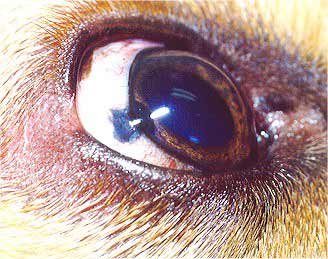Considered the most common type of mouth cancer in dogs, malignant melanomas are both invasive and spread rapidly, making surgical removal quite challenging.
malignant melanomas are a canine cancer that is both relatively common and fatal. Fine needle aspirates can be done A melanoma is made up of melanocytes, which are the cells that also determine the dark pigmentation of the skin. Approximately half of the dogs diagnosed with malignant nail bed melanoma die as a result of distant metastasis. Bobbi mcquown, dvm, dacvim (oncology) february 17, 2020.

Benign tumors grow at a much slower rate and therefore are easier to treat.
Clinical stages of canine oral melanoma 1 Your heart is in your throat, you ask him for a prognosis. It can be malignant or benign. In fact, early recognition of these malignant tumors of melanocytes can lead to more successful attempts at removal and identification of the grade or stage of cancer. He is a 14 year old male uk born golden retriever. of all digital tumors, 17.3% have been reported to be melanomas. Fine needle aspirates can be done My dog has had three masses removed from his right chest and leg. As new treatments are needed for this cancer, the scientists chose to explore the options available. melanomas can either be benign or malignant. Range in size from very small to 2.5 inches or more in diameter Just as in people, malignant melanoma is a type of skin cancer in dogs that affects pigmented cells known as melanocytes. When an eyelid tumor is suspected to be malignant:
However, not all rectal tumors are malignant. melanoma occurs more frequently in dogs with dark pigmented skin. We see it less commonly in cats than dogs, but it still has a significant prevalence in the feline species. Mm is often seen as a pigmented tumor affecting any portion of the mouth, including the gingiva, oral mucosa, or tongue. Canine melanoma is a malignant tumor.

When melanoma advances to stage 3, it means the tumor has spread to the lymph nodes or the skin around the primary tumor and lymph nodes.
Mm is the second most common oral tumor that we see in dogs. As new treatments are needed for this cancer, the scientists chose to explore the options available. As melanoma is the most dangerous type of skin cancer, it is very important to visit a doctor when you feel unsure about a skin lesion. melanoma, squamous cell carcinoma, sarcomas, and ameloblastomas. malignant tumors are locally agressive, and can spread to the nearby lymph nodes, salivary glands, or lungs. My dog had a bloody nose." melanoma there are two types of eyelid melanomas in dogs. Although many tumors of the mouth are benign, there are several significant malignant tumors that affect our pets. 2.5 cm) with ulceration, secondary infection, and rapid growth What dogs get toe tumors? This tumor is typically more aggressive, more likely to invade into underlying bone and to metastasize to regional lymph nodes and lungs than the more common digital scc. A melanoma is manifested through skin lesions that have unusual shapes or colors. If symptoms are present, they usually include:
This tumor is typically more aggressive, more likely to invade into underlying bone and to metastasize to regional lymph nodes and lungs than the more common digital scc. malignant melanomas are most commonly found on the lips mouth and nail beds. As a group, though, melanomas can be either benign or malignant. Just as in people, malignant melanoma is a type of skin cancer in dogs that affects pigmented cells known as melanocytes. Your heart is in your throat, you ask him for a prognosis.

Just as in people, malignant melanoma is a type of skin cancer in dogs that affects pigmented cells known as melanocytes.
My dog had a bloody nose." The most common oral tumors in dogs include: This tumor is locally invasive, and metastasizes early in the course of the disease. malignant melanomas are most commonly found on the lips mouth and nail beds. You will notice that all melanoma pictures are quite different from one another, making it harder to detect the disease by only a few pictures. malignant tumors are locally agressive, and can spread to the nearby lymph nodes, salivary glands, or lungs. 1 does my dog have an oral tumor? These tumors commonly occur in poodles, dachshunds, scottish terriers, golden retrievers, schnauzers, and rottweilers. According to the american college of veterinary surgeons (acvs), "benign and malignant tumors of the oral cavity account for … 6% of all tumors in dogs." When an eyelid tumor is suspected to be malignant: It can be malignant or benign. The annual incidence of oral cancer in dogs is 20 per 100,000 and in cats 11 per 100,000. melanoma, squamous cell carcinoma, sarcomas, and ameloblastomas.
41+ Pictures Of Malignant Melanoma In Dogs Background. melanoma is a term familiar to many people as it is common in the human species as well. What dogs get toe tumors? The second type arises from the pigmented eyelid margin, is flat and broad, and tends to expand in all directions. The behavior of the tumor depends on the location and grade. malignant melanoma (includes oral melanoma, ocular, and other areas such as paw pads) squamous cell carcinoma (usually a tumor on the epidermis) mast cell tumors (also on the skin, but can occur on the organs) vets recommend urgent treatment for malignant tumors, and melanoma accounts for the most common malignant tumor found in the mouth.






